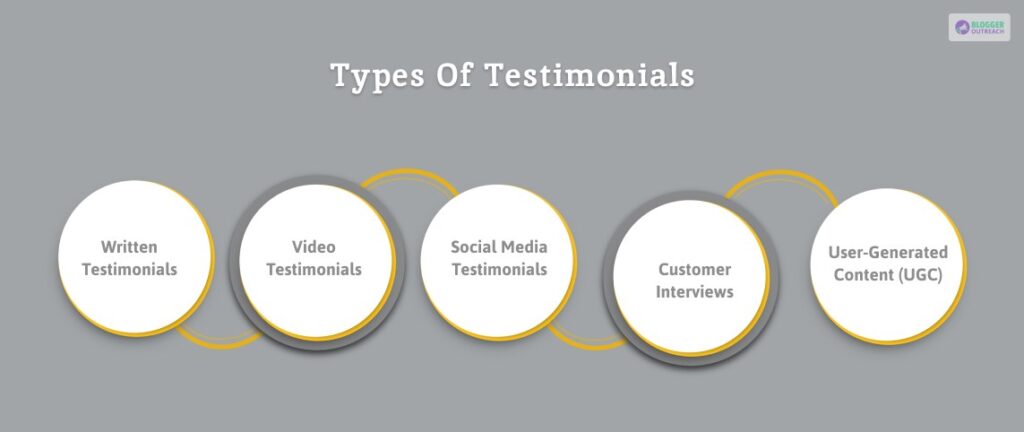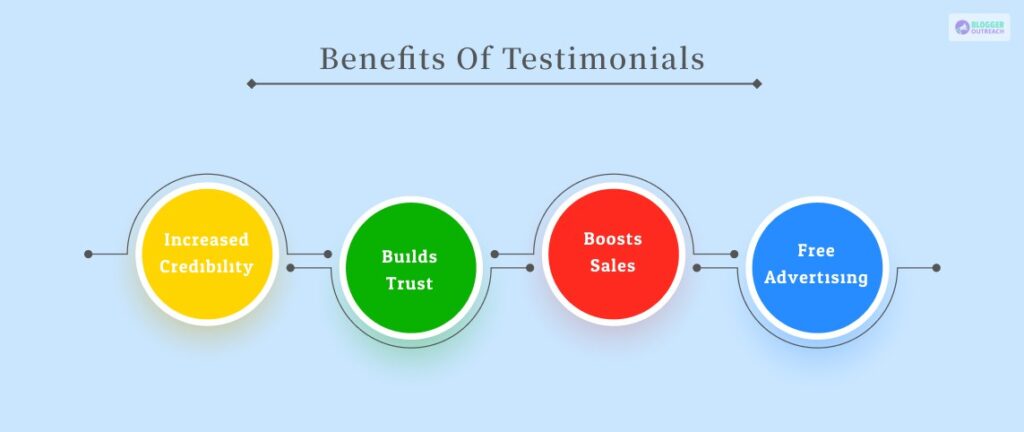Table Of Content
When it comes to your business, you might ask yourself-
“What will a prospective customer think of all the amazing claims I’m making about my brand?”
The answer is simple – you can boast all you want about your products and services, but how can a prospect be sure that these boasts are true and trustworthy?
That’s where customer testimonials can make all the difference!
With real-life experiences from customers giving their honest opinion about your business, you can show prospective customers that you have nothing to hide and your claims are factually accurate.
Testimonials are an incredibly powerful tool to show potential customers why your products and services are the best choices for them.
A testimonial is a short statement from one of your customers describing how your product or service made their life easier or better.
In this article, you’ll find out everything there is to know about testimonials.
- What are testimonials?
- How to write them.
- The types of testimonials.
- Benefits of using them.
Additionally, get tips on how to make the most of these powerful testimonials.
So look no further! Let’s get started.
What Is A Testimonial?

People generally trust the opinion of their peers more than they do a company.
A testimonial is a form of endorsement or recommendation from your existing customers. A good testimonial can be a deciding factor in the product or service’s success.
Testimonials also give potential customers an insight into how a product or service works and how satisfied other customers are with their experience.
Why Do Advertisers Use Testimonials?
- To build trust and credibility with prospects.
- To influence buyers’ decisions.
You Can Feature Testimonials In Multiple Ways-
- On product pages or landing ages.
- In print.
- In ads.
- Even on social media.
Types Of Testimonials

Testimonials come from customers, influencers, celebrities, or anyone familiar with the product or service. Popular testimonial formats are-
- Written Testimonials: These are often more powerful than other testimonials because they come from a real customer and, therefore, are more credible. Written testimonials are when customers write reviews or short statements about their experience with a company or product.
- Video Testimonials: Video testimonials are when customers provide a review of a product or service in the form of a video. This type of testimonial is especially effective because it allows customers to provide specific details and descriptions about their experience. As a result, video testimonials are often more engaging for potential customers and can provide a more comprehensive understanding of a product or service.
- Social Media Testimonials: Social media testimonials are when customers post their reviews on social media platforms such as Twitter, Facebook, or Instagram. These reviews are sharable and helpful. In addition, they aid you in increasing brand awareness and credibility.
- Customer Interviews: When companies conduct formal interviews with their customers to get detailed feedback about their experiences. This type of testimonial is particularly effective because it provides more in-depth information about a product or service. In addition, customer interviews are a great way to create videos, written reviews, or even case studies.
- User-Generated Content (UGC): User-generated content (UGC) is a type of content that customers or partners create. UGC testimonials or reviews are sharable on multiple platforms such as – websites, emails, and social media channels.
You May Like To Read This: Writing And Formatting A Whitepaper
How To Write A Good Testimonial?
Testimonials help highlight your product or service and showcase its value to potential customers. Here are 7 tips for writing effective testimonials:
1. Keep It Real

When creating an honest and powerful connection between your customers and potential customers, it’s essential to get genuine testimonials from real customers.
Ask your customers to describe their experience with your company, and include their name and a photo.
When writing a customer testimonial, keep it unique and personable by avoiding generic language and stock phrases. Instead, focus on the customer’s individual experience.
- How To Get Testimonials?
For example, ask the customer to explain how your product or service helped them, what they liked about it, and if they would recommend it to others. This will give potential customers a real insight into how your product or service can help them.
- Points To Remember
When creating a testimonial, accurately reflect the customer’s experience and use their words in their full context. Avoid taking quotes out of context or editing down too much, as this can lead to confusion and a loss of trust. It’s also important to include negative feedback in the testimonial if the customer’s experience is not positive to show that the company is open to honest feedback.
By getting genuine testimonials from real customers, you can create an emotional connection between your customers and potential customers, making your product or service stand out from the crowd.
2. Create A Narrative With Testimonials

Tell a story about your product and business with the help of customer testimonials.
Always Consider-
- The emotions you want to evoke.
- The challenges customers have overcome.
- The values they’ve found in using your product.
Once you know what story you want to tell, you’re one step closer to finding the perfect testimonials to boost your business.
When deciding on the narrative of testimonials, it is important to remember that the goal is to create an engaging story that will convince prospects to buy your product or service.
Points to remember when crafting the narrative of testimonials:
- Understand Your Audience: Before you begin preparing your testimonials’ narrative, it is important to have a clear head about your target audience and their expectations.
- Identify The Problem: Understand the problem that your product or service is solving for your customers. This will help you create a story that will be relatable to your audience and showcase how your product or service is beneficial.
- Include Specific Details: Include specific details about how your product or service has helped your customers. This will help to create a more engaging and convincing narrative.
- Use Emotional Language: Use emotional language to help your customers relate to the story and capture their attention.
By following these steps and crafting an engaging narrative, you can create testimonials that will help to convince potential customers to purchase your product or service.
3. Focus On Benefits

Tap into the power of a persuasive testimonial! Describe how the product or service benefited the customer rather than simply listing features.
Writing about a product’s or service’s benefits effectively shows potential customers its value.
(i) Focus On Customer Experience
First, start strong by emphasizing a key benefit or advantage you experienced. Then, add details to explain how you shared it.
For instance, if you’re writing a testimonial for a gardening service, you can begin by saying it “saved me time and money by taking care of all the hard labor for my garden.”
Then, explain how the service mowed the lawn, planted flowers, and trimmed the hedges for you.
(ii) Highlight The Impact!
Another way to focus on benefits in a testimonial is to provide details about how the product or service improved your life.
For example, suppose you are writing a testimonial for a financial planning service.
In that case, you could start by saying that “the service helped me manage my finances and gave me peace of mind knowing that I was taking the best steps to secure my financial future.”
Then, you can provide specifics about how the service helped you manage your finances, such as how they created a budget and advice on investing your money.
4. Keep It Short And Sweet

Testimonials should be concise and to the point. Avoid long-winded descriptions of the product or service.
Keeping testimonials short, specific, honest, and relevant can effectively draw in potential customers and help them make informed decisions.
(i) Be Specific: The best testimonials detail how the customer benefited from using the product or service. For example, if a customer says that a product saved them time, provide an exact figure, such as “This product saved me 3 hours per week of manual labor.”
(ii) Honesty Matters: Testimonials should also be honest and genuine. Customers should feel like they are talking to a real person and not just a marketing tool.
If you get any negative reviews, add them. This will give potential customers a more realistic view of the product or service and its real-life applications.
(iii) Be Relevant: Testimonials should be relevant to the product or service and the targeted customers. For example, suppose the testimonial references a feature that the customer doesn’t use or comes from a customer who isn’t in the same demographic as the target audience. In that case, it will be less effective.
5. Include Specifics

When writing testimonials, it is important to provide specific details about how the customer used the product or service and the results they experienced.
For example, you could say, “Annie used our product to generate leads for his business, and within a week, she experienced a 20% increase in leads.”
This provides a concrete example of how customers used the product and the results they experienced.
Rather than simply stating the customer’s satisfaction level, provide specific details about their experience.
Another Example
You could say, “Annie liked the intuitive design of our product. She quickly learned how to use it and saw immediate results in the form of increased leads.”
This provides a more detailed picture of the customer’s experience and helps to illustrate why they would recommend the product or service to others.
6. Remain On-Brand

When it comes to testimonials, it is important to remember that they are an extension of your brand.
Please ensure that the tone and style of your testimonials remain consistent with your overall branding.
This means that the language used in the testimonials should be in line with the language used in other marketing materials-
- Such as website copy.
- Social media posts.
- Advertising campaigns.
Please ensure that the visuals used in the testimonials, such as customer photos or videos, remain consistent with those used in other branding materials. This will ensure that customers recognize the consistency between your brand and the testimonials they see.
The content of the testimonials should remain on-brand, as well. For example, if your brand is a customer service provider, it is important to mention customer service in the testimonials.
7. Ask For Permission

Please ensure you get the customer’s permission before publishing their testimonial.
It is, again, necessary to ensure that the customer knows you’re utilizing their testimonials for your marketing efforts.
When asking for permission, you should be clear about using the testimonials.
Ensure that the customer is comfortable sharing their content with the public.
Make sure to provide the customer with an opportunity to review the testimonial before it is published and give them a copy or a link to the printed version. This helps to ensure that their review is a true representation of their experience.
Benefits Of Testimonials

Testimonials help companies to provide social proof of their services and products by showcasing customer experiences and satisfaction. They come with the following benefits-
- Increased Credibility: They demonstrate that others have had a good experience with your business and can help alleviate potential customers’ concerns.
- Builds Trust: People trust other customers’ experiences because they can relate to them. You can show potential customers that you are reliable and trustworthy by featuring customer testimonials.
- Boosts Sales: Businesses can encourage potential customers to take the plunge and purchase by showcasing customer satisfaction. Testimonials are also a great way to combat any objections customers may have before they make a purchase.
- Free Advertising: People are more likely to trust a review from an actual customer rather than a traditional advertisement. By featuring customer testimonials, businesses can spread the word about their product or service for free.
The Ultimate Takeaways: Points To Consider
As you work on developing customer testimonials, keep two things in mind: reputation and conversions.
Positive reviews drive potential customers to take action.
And giving customers a great experience is essential for building relationships and staying top-of-mind when people think of a successful, respected, dependable brand.
Planning, carefully crafting your story, and emphasizing how you can help customers achieve their goals can help you create an impressive and memorable testimonial. That will leave a lasting impression and ultimately increase conversions.
When writing testimonials, be sure to keep the language simple and clear. Stick to positive language and avoid using jargon. Use language and phrasing consistent with how you talk about your product elsewhere.
Finally, be sure to check your testimonials for spelling and grammar errors. This will help ensure that your testimonials are professional and reflect well on your business.
Read Also:








